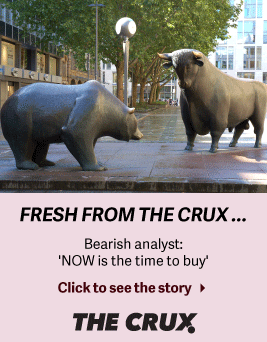| Home | About Us | Resources | Archive | Free Reports | Market Window |
Stocks and House Prices Go UP When the Fed STARTS Raising RatesBy
Thursday, December 17, 2015
You won't believe me... but it's true...
Stock prices and house prices actually do extremely well when the Fed STARTS raising interest rates...
I know, I know. I get it. It shouldn't happen.
Rising interest rates should be a "negative" for stocks, as corporate borrowing costs go up and profit margins go down.
But it turns out, these things don't hurt stock prices... Based on history, stocks go up.
Let me explain...
Since 1950, stocks have performed incredibly well when the Fed has started raising interest rates (called "tightening"). And stocks have actually underperformed when the Fed has started cutting interest rates (called "easing"). Take a look:
Just yesterday, the Federal Reserve announced that it's raising interest rates for the first time since 2006. The rate hike is minor... It's almost irrelevant. What's happening is, the Federal Reserve is trying to get interest rates more "back to normal" as opposed to "tightening."
In the case of Fed rate hikes, the first rate hike does NOT tend to end bull markets. That might be because people are optimistic, and the first interest rate hike is a sign that things are getting back to normal.
Over the last 30 years, stocks have moved higher in the two years after a rate-hiking cycle began.
The Federal Reserve just hiked rates. Based on history, stocks could go higher over the next two years.
It's not all roses... Stocks tend to fall for a couple of months after the first time the Fed starts hiking rates. Then stocks enter a strong move higher.
We can't know for sure what will happen this time... There is no guarantee of a small downward move followed by a big upward move. But history is the best guide we have. And that's what it tells us.
The story is similar with U.S. house prices...
It's easy to make the case that house prices SHOULD go down when interest rates start to go up, as you would think that mortgage rates would go up.
But history tells a different story about house prices after the Fed starts raising interest rates...
Going back to the late 1960s, house prices perform incredibly well when the Fed starts raising interest rates. Take a look:
Most folks simply assume that the Fed raising interest rates is a bad thing for stock prices and for house prices. Don't fall for this myth. It's simply not true.
The Fed is hiking rates for the first time since 2006 right now... But the start of a rate-hiking cycle is not a bad thing, based on history.
U.S. stocks and house prices can still go much higher from here...
Good investing,
Steve
Further Reading:
Last week, Steve showed readers why there's more potential upside in stocks than most people believe today. "Stocks today have gone up a lot since their 2009 recession bottom," he says. "But if they happen to follow the 1990s' path, they could go up a lot more." See why right here: The Upside Potential Here Could Blow Your Mind.
And earlier this year, Steve noted another reason to stay in stocks. "This extreme alone isn't enough to make us incredibly bullish on stocks," he said. "But its message is powerful..." Learn more right here: This Rare Extreme Points to Higher Stock Prices.
Market NotesTHIS CYCLICAL FUND IS PLUMMETING Today, we present an important downtrend... and another reminder to stay cautious of cyclical assets.
A couple of weeks ago, we noted the recent plunge in shares of Cummins. As the world's largest independent manufacturer of high-horsepower diesel engines (that go in things like bulldozers and heavy trucks), Cummins' share price rises and falls with the pace of global economic activity. This makes Cummins a "cyclical" stock.
Another "cyclical" idea is the big SPDR S&P Metals and Mining Fund (XME). This fund consists mainly of steelmakers, mining companies, and other companies responsible for building materials. If folks aren't building and manufacturing at full speed, this fund's holdings suffer.
After climbing higher in April, shares of XME have been trending lower. The fund is down 50% over the past seven months... and just touched a new all-time low. As we explained with Cummins, this alone isn't reason to panic... but it's another red flag worth keeping an eye on.
 |
Recent Articles
|



